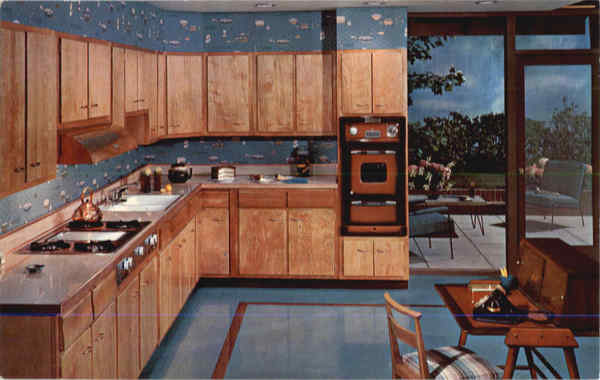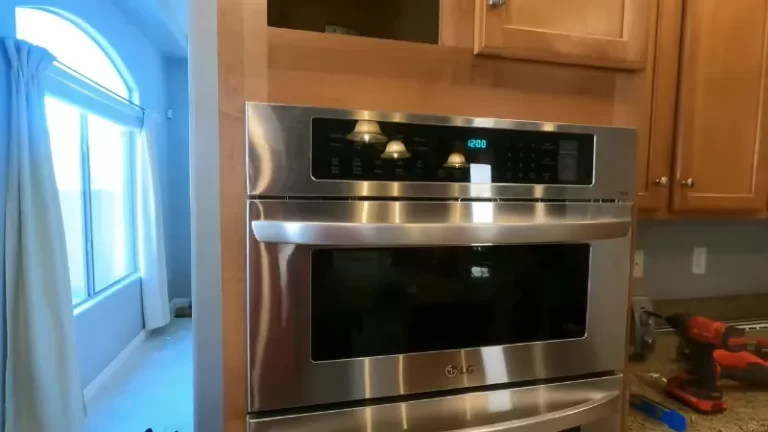Freeze Proof Cabinet [Meaning, Method to Do]

A freeze-proof cabinet is a type of storage unit designed specifically to protect items from freezing temperatures. These cabinets are often used in outdoor or unheated storage spaces, such as sheds, garages, or warehouses, to protect items that are sensitive to freezing, such as paints, chemicals, and other hazardous materials.
Freeze-proof cabinets can be an important tool for ensuring that these types of items remain in good condition throughout the winter months, as freezing temperatures can damage or destroy them. There are several methods for freeze-proofing a cabinet, including the use of insulation, heat tape, and heating pads, and it is important to carefully consider the type of heating element used and the location and placement of the cabinet to ensure maximum effectiveness.
You'll Learn About
What is Freeze Proof Cabinet?
A freeze-proof cabinet is a type of storage unit designed to protect items from freezing temperatures, typically by using insulation and heating elements to maintain a consistent, above-freezing temperature inside the cabinet. These cabinets are often used in outdoor or unheated storage spaces, such as sheds, garages, or warehouses, to protect items that are sensitive to freezing, such as paints, chemicals, and other hazardous materials.
There are several methods for freeze-proofing a cabinet, including the use of insulation, heat tape, and heating pads. Insulation helps to reduce the amount of heat loss from the cabinet, while heat tape and heating pads can be used to directly heat the interior of the cabinet.
It is important to carefully consider the type of heating element used, as some methods may be more appropriate for certain situations than others. For example, heat tape may not be suitable for use in a cabinet storing hazardous materials due to the risk of sparks or fires.
In addition to using insulation and heating elements, it is also important to consider the location and placement of the freeze-proof cabinet. For maximum effectiveness, the cabinet should be placed in a location that is protected from the elements and out of direct contact with the ground, which can act as a conductor of cold temperatures. Proper sealing of the cabinet, including weatherstripping around the doors and gaps in the walls, can also help to reduce the amount of heat loss and improve the efficiency of the freeze-proofing measures.
Overall, a freeze-proof cabinet is an important tool for protecting sensitive items from freezing temperatures in outdoor or unheated storage spaces. By using insulation, heating elements, and proper placement and sealing, it is possible to effectively protect items from freezing and ensure that they remain in good condition throughout the winter months.
Methods for Freeze-proofing a Cabinet
There are several methods for freeze-proofing a cabinet, each with their own benefits and drawbacks. Here is a more detailed look at each of these methods:
Insulation
One of the most common methods for freeze-proofing a cabinet is to use insulation. Insulation helps to reduce the amount of heat loss from the cabinet, keeping the interior temperature more stable. There are several types of insulation that can be used, including fiberglass, foam, and mineral wool.
Insulation can be added to the walls, ceiling, and floor of the cabinet to help reduce heat loss.
Heat Tape
Heat tape is a type of flexible heating element that can be used to directly heat the interior of a cabinet. Heat tape is typically made of a thin, insulated wire that is coated with a heat-conducting material.
When electricity is applied to the heat tape, it generates heat, which is then transmitted to the surrounding area. Heat tape is often used to prevent pipes from freezing, but it can also be used to freeze-proof a cabinet.
Heating Pads
Heating pads are another option for freeze-proofing a cabinet. These devices use electricity to generate heat, which is then transferred to the surrounding area through a heating element. Heating pads are typically portable and can be placed inside the cabinet to provide direct heat.
They are relatively simple to use and can be easily turned on and off as needed. However, they may not be as efficient as other methods at maintaining a consistent temperature.
It is important to carefully consider the type of heating element used when freeze-proofing a cabinet, as some methods may be more appropriate for certain situations than others. For example, heat tape may not be suitable for use in a cabinet storing hazardous materials due to the risk of sparks or fires.
Factors to Consider When Selecting a Freeze-proofing Method
When selecting a method for freeze-proofing a cabinet, there are several factors to consider to ensure that the chosen method is effective and safe. These include:
Type of Items Being Stored
The type of items being stored in the cabinet will often dictate the most appropriate freeze-proofing method. For example, if the cabinet is being used to store hazardous materials, such as paints or chemicals, it may be necessary to avoid methods that pose a risk of sparks or fires, such as heat tape. In these cases, insulation or a heating pad may be a safer option.
Location and Placement of the Cabinet
The location and placement of the cabinet can also impact the effectiveness of the freeze-proofing method. For maximum effectiveness, the cabinet should be placed in a location that is protected from the elements and out of direct contact with the ground, which can act as a conductor of cold temperatures. Proper sealing of the cabinet, including weatherstripping around the doors and gaps in the walls, can also help to reduce the amount of heat loss and improve the efficiency of the freeze-proofing measures.
Risk of Sparks or Fires
As mentioned above, the risk of sparks or fires is an important consideration when selecting a freeze-proofing method, particularly if the cabinet is being used to store hazardous materials. Methods that pose a higher risk of sparks or fires, such as heat tape, should be avoided in these cases. Instead, safer options, such as insulation or heating pads, should be considered.
Overall, it is important to carefully consider these factors when selecting a freeze-proofing method to ensure that the chosen method is effective, safe, and appropriate for the specific needs and circumstances of the cabinet and the items being stored.
Other Important Considerations for Effective Freeze-proofing
In addition to the use of insulation, heating elements, and proper placement and sealing, there are several other important considerations for effective freeze-proofing of a cabinet. These include:
Proper Sealing of the Cabinet
As mentioned earlier, proper sealing of the cabinet is important for reducing heat loss and improving the efficiency of the freeze-proofing measures. This includes sealing any gaps or openings in the walls, doors, and floor of the cabinet to prevent cold air from entering and warm air from escaping. Weatherstripping around the doors and windows can also help to reduce heat loss.
Placement of the Cabinet to Protect It From the Elements
The location and placement of the cabinet can also impact its ability to protect stored items from freezing temperatures. The cabinet should be placed in a location that is protected from the elements, such as a shed or garage, and out of direct contact with the ground, which can act as a conductor of cold temperatures. It is also important to ensure that the cabinet is properly anchored to prevent it from being moved or knocked over by wind or other external forces.
Proper Ventilation to Prevent Moisture Buildup
Proper ventilation is important to prevent moisture buildup inside the cabinet, which can lead to the formation of condensation and frost. Proper ventilation can help to maintain a consistent temperature and reduce the risk of moisture buildup. This can be achieved through the use of ventilation holes or by installing a small fan to circulate the air inside the cabinet.
Overall, these considerations can help to ensure that the freeze-proofing measures are effective and that stored items are protected from freezing temperatures. By taking the time to properly implement these measures, it is possible to effectively protect stored items from freezing and ensure that they remain in good condition throughout the winter months.
Tips for Freeze-proofing a Cabinet
Here are a few additional tips for freeze-proofing a cabinet that were not discussed in the previous paragraphs:
Use a Thermostat to Control the Temperature
A thermostat can be used to automatically turn on and off the heating element as needed to maintain a consistent temperature inside the cabinet. This can help to reduce energy consumption and ensure that the cabinet is not overheated, which could damage the stored items.
Consider Using a Temperature Monitoring System
A temperature monitoring system, such as a thermometer or temperature sensor, can be used to track the temperature inside the cabinet and alert you if it falls below a certain threshold. This can be helpful for ensuring that the cabinet is being adequately heated and that stored items are not at risk of freezing.
Keep the Cabinet Closed
To reduce heat loss and improve the efficiency of the freeze-proofing measures, it is important to keep the cabinet doors closed as much as possible. This will help to keep the warm air inside the cabinet and prevent cold air from entering.
Use a Cabinet Cover
A cabinet cover, such as a tarp or canvas, can be used to protect the cabinet from the elements and further reduce heat loss. The cover should be securely fastened to the cabinet to prevent it from being blown away by wind.
Consider Adding a Dehumidifier
If the cabinet is being used to store items that are sensitive to moisture, such as electronics or documents, it may be helpful to use a dehumidifier to remove excess moisture from the air inside the cabinet. This can help to prevent the formation of condensation and frost, which could damage the stored items.
Conclusion
Freeze-proofing a cabinet is an important consideration for protecting sensitive items from freezing temperatures in outdoor or unheated storage spaces. By using insulation, heating elements, and proper placement and sealing, it is possible to effectively protect items from freezing and ensure that they remain in good condition throughout the winter months.
However, it is important to carefully consider the type of heating element used and the specific needs and circumstances of the cabinet and the items being stored in order to select the most appropriate freeze-proofing method.
Proper implementation of the chosen method is also crucial to ensure the maximum effectiveness and safety of the freeze-proofing measures. By following these guidelines and properly freeze-proofing a cabinet, it is possible to effectively protect stored items from freezing temperatures and ensure their long-term viability.



